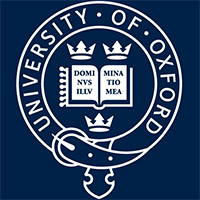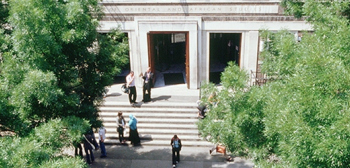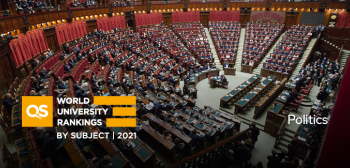- #4 QS Global World Ranking
- PublicStatus
- Very HighResearch Output
- 22,152Total Students
- 6,598Faculty
- 9,087Int'l Students
The University’s position in the current QS World University Rankings.
Whether the University is funded by the government of that country or state, or funded by private donations.
The research intensity of the University, based on the number of papers output relative to the University’s size.
The number of full time equivalent students enrolled at the University.
The number of full time equivalent teaching staff employed by the University.
The number of full time equivalent international students enrolled at the University.
University of Oxford
About
Oxford offers 48 undergraduate degrees in a wide range of disciplines, from the traditional sciences through to humanities, law, languages, and fine art. Students can also study joint honors programs such as Philosophy and Theology, and Archaeology and Anthropology.
Undergraduate degrees are usually three years in length and are taught inside the individual college to which students apply. Undergraduate study at Oxford is centered on the weekly tutorial, which is supported by classes, lectures, and laboratory work carried out in university faculties and departments.
The admissions rate for Oxford is 21 percent, which seems high in comparison to Ivy League universities but is a reflection of the English system. The application period runs during the autumn for the following academic year. Applicants register to take a test, and prospective students might have to send in written work alongside the standard completed UCAS form. Shortlisted candidates are then invited to interview, and will know whether they have been successful by the end of the calendar year.
Unlike the University of Cambridge, Oxford does not operate a pooling system for candidates invited to interview. Instead, it’s common for applicants to be asked to stay multiple days in the city (accommodation is provided) and, if there are no places available at their first-choice college, they may also be invited for interviews at other colleges which have less competition for places.
Around 17 percent of applicants are international citizens, and there are no quotas for international students (with the exception of the medicine program). The application process is broadly the same for international students, with Oxford accepting school-leaving qualifications from many different countries. There are, however, additional elements to the application such as English language requirements.
Tuition fees are currently set at the annual UK maximum of £9,250, with loans available from the UK government for the full amount. Loans are also available to cover living costs during the full three years of study. Students from outside the EU are charged a significantly higher tuition fee, of up to £24,000 a year, and an additional £7,570 a year college fee. This does not include accommodation or board.
Terms at Oxford are actually shorter than at other UK higher education institutions, and their total duration amounts to less than half of the year. However, undergraduates are also expected to do some academic work during the three holidays, known as the Christmas, Easter, and Long Vacations.
About
Oxford offers 48 undergraduate degrees in a wide range of disciplines, from the traditional sciences through to humanities, law, languages, and fine art. Students can also study joint honors programs such as Philosophy and Theology, and Archaeology and Anthropology.
Undergraduate degrees are usually three years in length and are taught inside the individual college to which students apply. Undergraduate study at Oxford is centered on the weekly tutorial, which is supported by classes, lectures, and laboratory work carried out in university faculties and departments.
The admissions rate for Oxford is 21 percent, which seems high in comparison to Ivy League universities but is a reflection of the English system. The application period runs during the autumn for the following academic year. Applicants register to take a test, and prospective students might have to send in written work alongside the standard completed UCAS form. Shortlisted candidates are then invited to interview, and will know whether they have been successful by the end of the calendar year.
Unlike the University of Cambridge, Oxford does not operate a pooling system for candidates invited to interview. Instead, it’s common for applicants to be asked to stay multiple days in the city (accommodation is provided) and, if there are no places available at their first-choice college, they may also be invited for interviews at other colleges which have less competition for places.
Around 17 percent of applicants are international citizens, and there are no quotas for international students (with the exception of the medicine program). The application process is broadly the same for international students, with Oxford accepting school-leaving qualifications from many different countries. There are, however, additional elements to the application such as English language requirements.
Tuition fees are currently set at the annual UK maximum of £9,250, with loans available from the UK government for the full amount. Loans are also available to cover living costs during the full three years of study. Students from outside the EU are charged a significantly higher tuition fee, of up to £24,000 a year, and an additional £7,570 a year college fee. This does not include accommodation or board.
Terms at Oxford are actually shorter than at other UK higher education institutions, and their total duration amounts to less than half of the year. However, undergraduates are also expected to do some academic work during the three holidays, known as the Christmas, Easter, and Long Vacations.
University highlights
- 2012#5
- 2014#6
- 2015#=5
- 2016#6
- 2017#6
- 2018#6
- 2019#5
- 2020#4
- 2021#5
- 2022#2
- 2023#4
- 2024#3
- 2025#3
- 2026#4
Scholarships
Campus locations
Wellington Square, Oxford, GB,
Wellington Square , Oxford , United Kingdom , OX1 2JD
Saïd Business School,
Park End Street , Oxford , United Kingdom , OX1 1HP
Similar Universities
The London School of Economics and Political Science (LSE)
Houghton Street, London
44 QS World University Rankings
Test preparations
Featured University


-
10 UG & 47 PGTotal courses
-
Private for ProfitStatus
-
HighResearch output






















